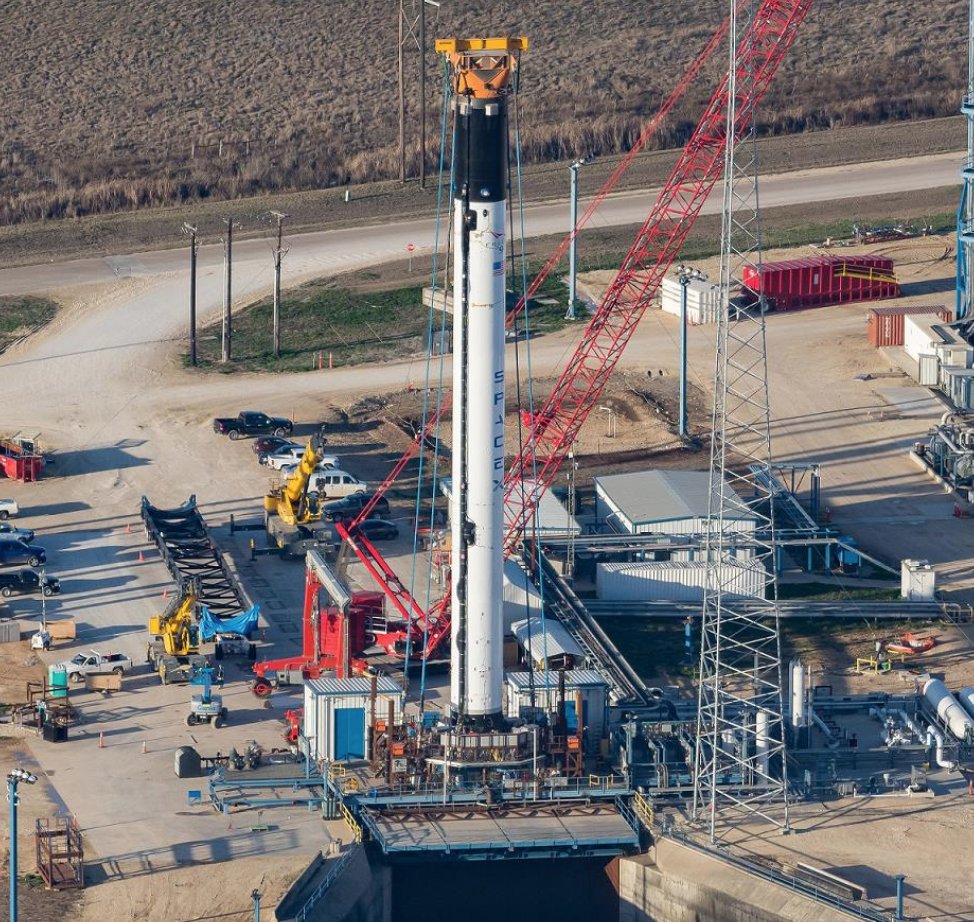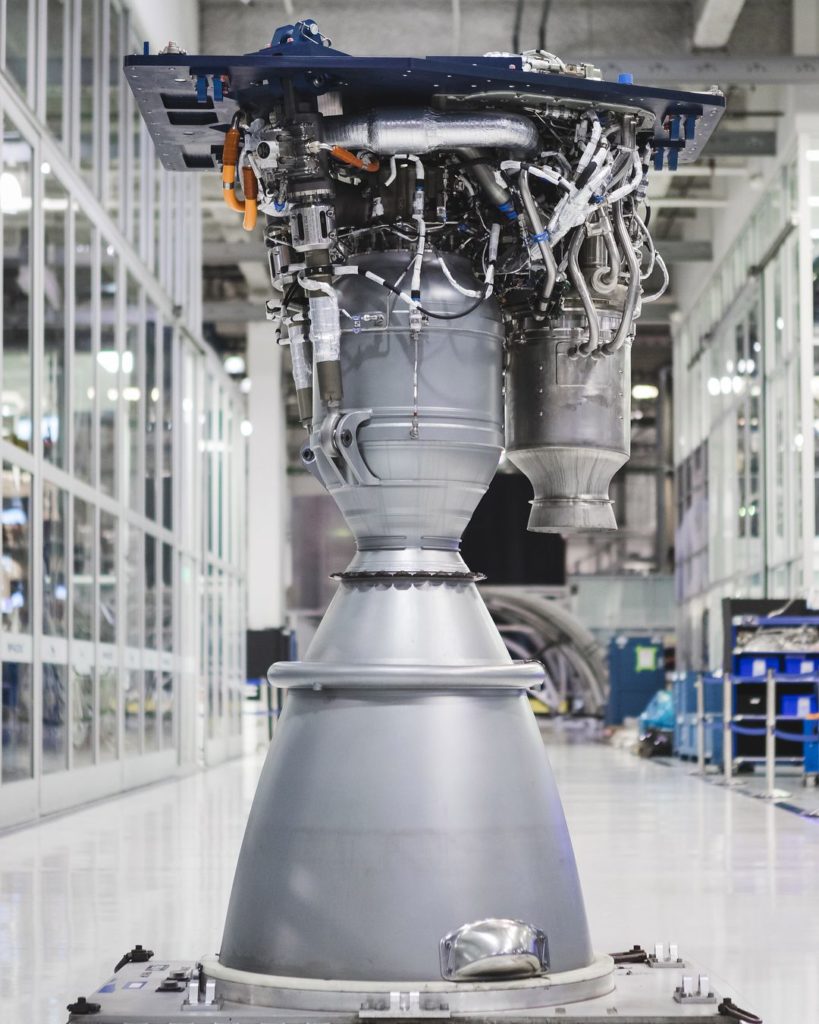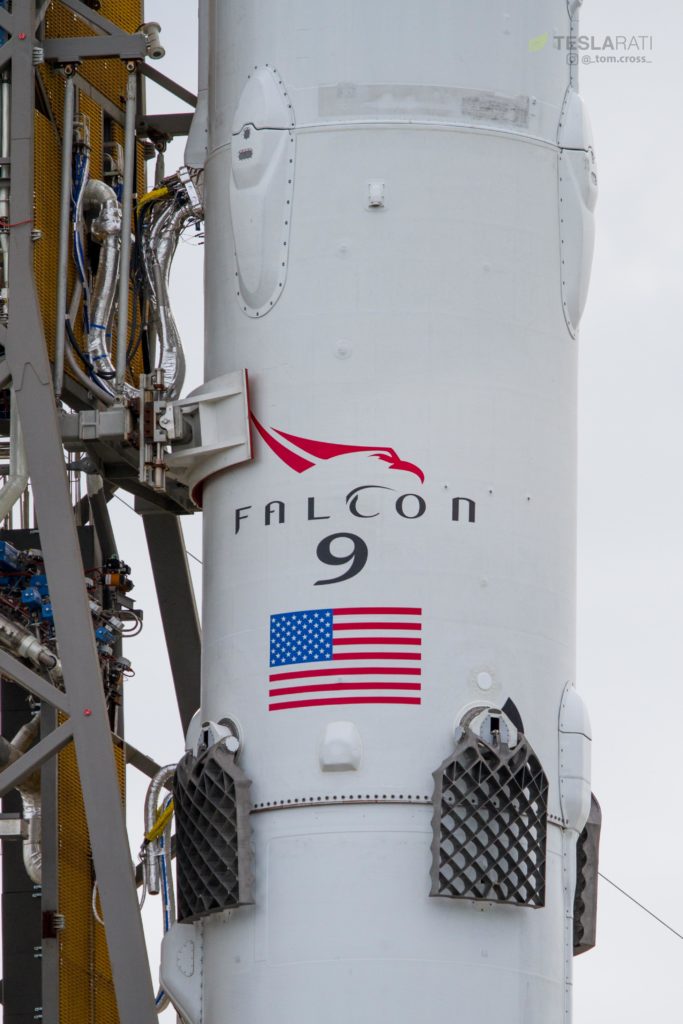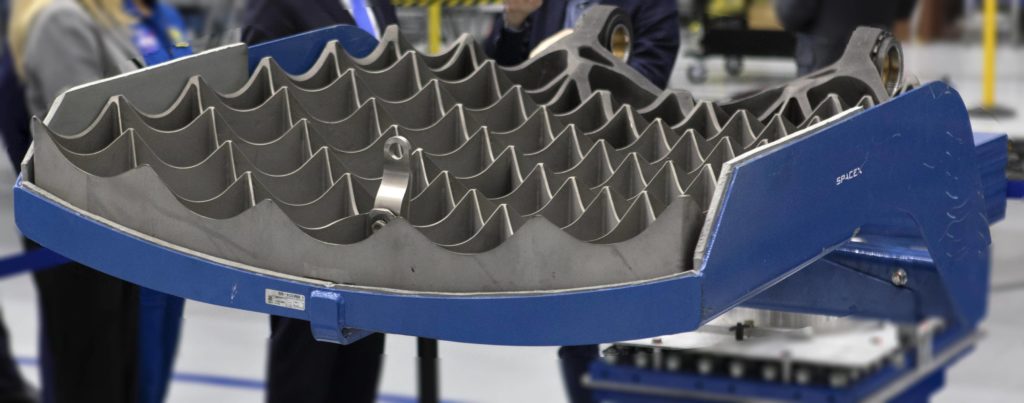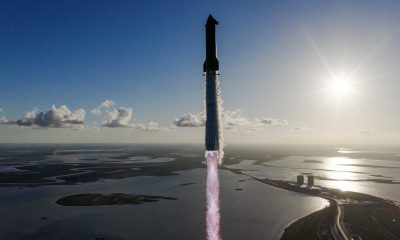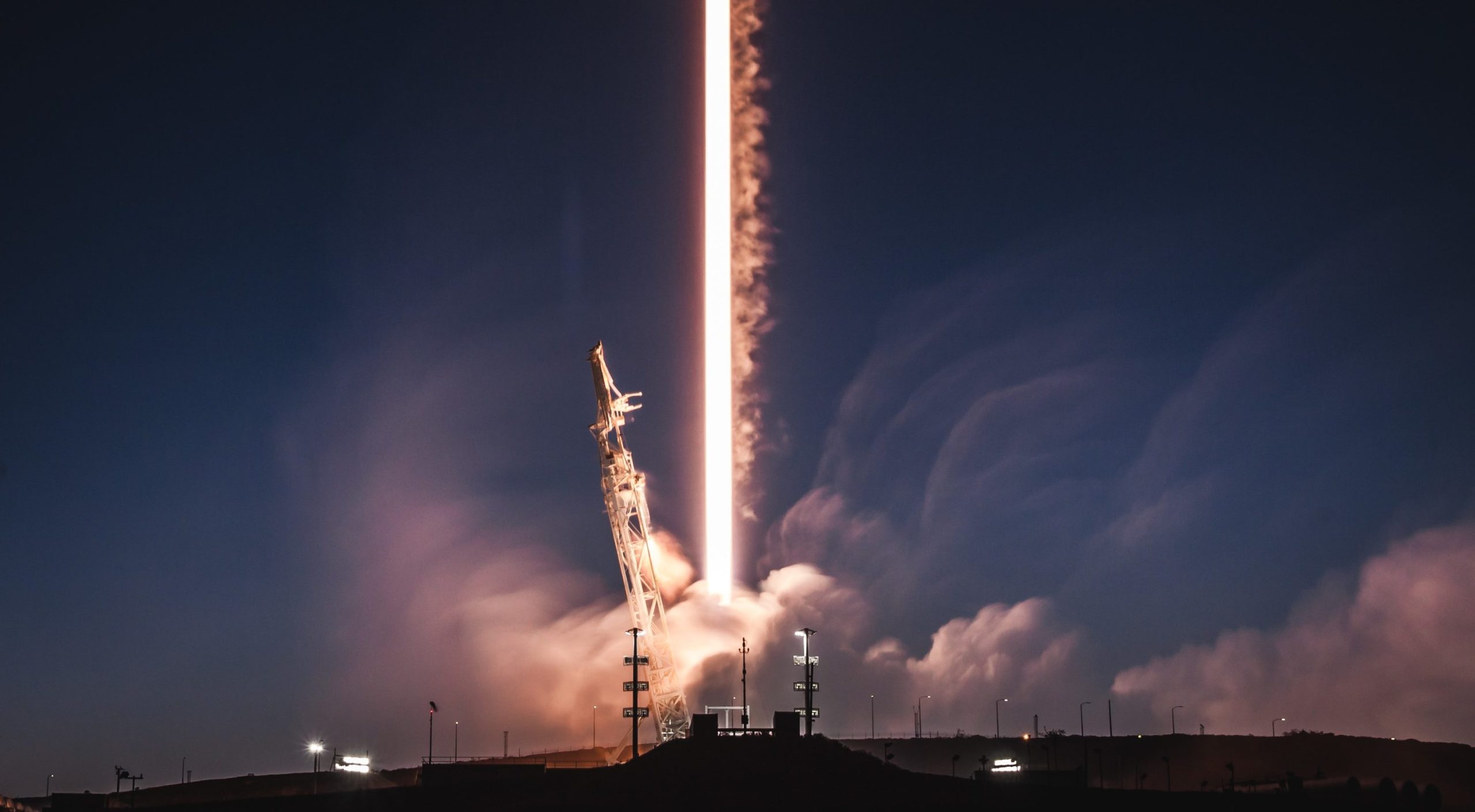
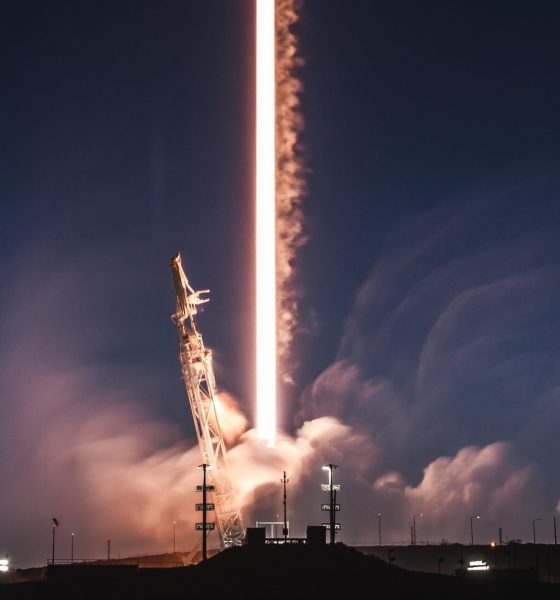
SpaceX
SpaceX’s Falcon 9 Block 5 rocket gets its first public launch date on April 24
After an unusually extended period of testing in McGregor, Texas, SpaceX’s next-generation Falcon 9 Block 5 booster (B1046) appears to be scheduled for an inaugural flight as early as April 24, a three-week recalibration from the original April 5 launch date.
New hardware, new bugs
A fairly significant leap from the current Block 3 and 4 iterations of Falcon 9, it should come as no surprise that the first Block 5 booster has taken a bit longer than anticipated to pass through its first integrated static fire testing and inaugural launch preparations. Put simply, new hardware takes time and safety and reliability take near-complete precedence over expediency.
- SpaceX Block 5 Falcon9 at McGregor, Texas [Credit: Chris G – NSF via Twitter, Reprinted with permission from NASASpaceflight.com]
- A matte-silver Block 5 Merlin 1D rocket engine seen preparing to leave SpaceX’s Hawthorne factory for testing in Texas. (SpaceX)
- RIP B1044’s titanium grid fins. May they make a happy little reef at the bottom of the ocean. (Tom Cross)
- A unique perspective of SpaceX’s upgraded grid fin – dwarfing its human onlookers. (NASA)
Arguably, the better part of half of all of SpaceX’s planned 2018 launches will depend heavily on the Block 5 upgrade of Falcon 9 (and Heavy), especially if the company still intends to complete 20-25 launches between now and the end of the year. Per a relatively new strategy of intentional expending recoverable, flight-proven Falcon 9 boosters after their second launches, SpaceX is on track to effectively deplete their stock of non-Block 5 hardware well before the second half of 2018. As such, approaching Block 5’s introduction with extreme caution (as with most things in rocketry) is undoubtedly in SpaceX’s best interest. The gradual march to B1046’s first flight will thus continue forth to NET April 24 – subject to change, of course.
CONFIRMED by @Thales_Alenia_S, Bangabandhu-1 is manifested to launch on the first 'Block-5' Falcon 9 rocket, NET April 24.
From Thales, "This has resulted in some extra delay. However, Bangabandhu-1 will fly on the most advanced and reliable vehicle ever built by #SpaceX"
— AmericaSpace (@AmericaSpace) March 28, 2018
Thales-Alenia’s confirmation lends credence to the argument that the relatively lengthy period B1046 spent in Texas was simply SpaceX giving a complex and new technological system its due diligence – better to test cautiously and fix bugs than to rush complex procedures and damage the rocket, an eventuality likely to push any tentative launch date back to a much greater extent.

SpaceX continues a cautious regiment of tests for the newest Falcon 9 upgrade, Block 5. (Reddit /u/HollywoodSX)
Launches abound
With Bangabandhu-1 now officially scheduled NET April 24, the SpaceX focal point can return to a flurry of upcoming launches – Iridium-5 (NET Mar 30), CRS-14 (NET April 2), and TESS (NET April 16). Teslarati photographers Pauline Acalin (West Coast) and Tom Cross (East Coast) will be on the ground for all upcoming launches to capture some of the final swan songs of SpaceX’s rapidly diminishing stock of flight-proven Falcon 9s.
Static fire test of Falcon 9 complete—targeting April 2 launch from Pad 40 in Florida for Dragon’s fourteenth mission to the @Space_Station.
— SpaceX (@SpaceX) March 28, 2018
Teslarati – Instagram – Twitter
Tom Cross – Twitter
Pauline Acalin – Twitter
Eric Ralph – Twitter
News
SpaceX opens up free Starlink service for those impacted by Hurricane Melissa

SpaceX is opening up its internet service, Starlink, to those impacted by Hurricane Melissa, as it made landfall in Jamaica and the Bahamas as a Category 5 storm.
Hurricane Melissa is expected to reach wind speeds of over 165 MPH over the next few days as it extends out into the Atlantic Ocean by Thursday and Friday.
Satellite imagery shows Hurricane #Melissa‘s growth from its formation on October 21 to a Category 5 hurricane through October 27, 2025. #HurricaneMelissa pic.twitter.com/goR3Hbgb9c
— The Weather Network (@weathernetwork) October 27, 2025
Citizens in Jamaica and the Bahamas have been preparing for the storm for the past week, getting necessary goods together and preparing for the massive storm to arrive. It finally did yesterday, and the first images and video of the storm are showing that it could destroy many parts of both countries.
Starlink is now being opened up for free until the end of November for those impacted by the storm in Jamaica and the Bahamas, SpaceX announced today:
For those impacted by Hurricane Melissa in Jamaica and the Bahamas, Starlink service is now free through the end of November to help with response and recovery efforts → https://t.co/fUko3xSviJ
— Starlink (@Starlink) October 28, 2025
It is a move similar to the one the company made last year as Hurricane Helene made its way through the United States, destroying homes and property across the East Coast. SpaceX offered free service for those impacted by the destruction caused by the storm.
The free Starlink service was available until the end of 2024.
Elon Musk’s companies have also made similar moves to help out those who are impacted by natural disasters. Tesla has offered Free Supercharging in the past, most notably during the California wildfires.
Tesla and SpaceX’s LA fire relief efforts: Cybertrucks, free Starlink and more
One major advantage of Starlink is that it is available for use in situations like this one, where power might be required to operate things like a modem and router.
Internet access is a crucial part of survival in these situations, especially as it can be the last leg some stand on to get in touch with emergency services or loved ones.
News
SpaceX reaches incredible Starlink milestone
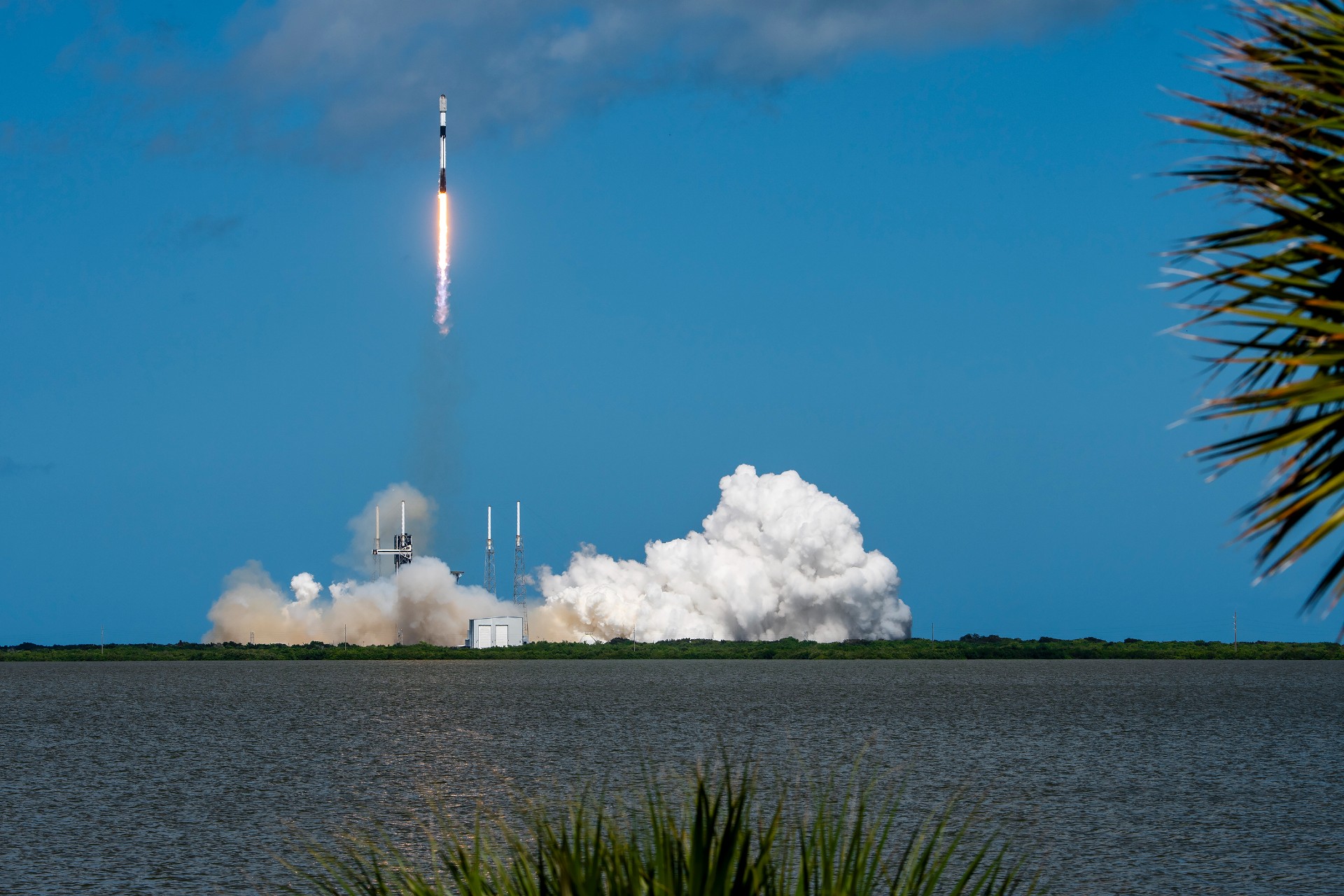
SpaceX has reached an incredible milestone with its Starlink program, officially surpassing 10,000 satellites launched into low Earth orbit since starting the program back in 2019.
Last Sunday, October 19, SpaceX launched its 131st and 132nd Falcon 9 missions of 2025, one from Cape Canaveral, Florida, and the other from Vandenberg, California.
The 10,000th Starlink satellite was aboard the launch from California, which was Starlink 11-19, and held 28 v2 mini optimized satellites.
The achievement was marked by a satellite tracker developed by Jonathan McDowell.
🚨 With its Falcon 9 launch last Sunday, SpaceX officially has 10,000 Starlink satellites in orbit pic.twitter.com/xS5RVZ4ix0
— TESLARATI (@Teslarati) October 26, 2025
The first Starlink launch was all the way back on May 23, 2019, as SpaceX launched its first 60 satellites from Cape Canaveral using a Falcon 9 rocket.
Of the over 10,000 satellites in orbit, the tracker says 8,608 are operational, as some are intentionally de-orbited after becoming faulty and destroyed in the atmosphere.
SpaceX has truly done some really incredible things during its development of the Starlink program, including launch coverage in a global setting, bringing along millions of active subscribers that use the service for personal and business use, locking up commercial partnerships, and more.
Starlink currently operates in around 150 countries, territories, and markets and is available at least somewhere on all seven continents.
Additionally, Starlink has over 5 million subscribers worldwide, and 2.7 million have joined the program over the past year. It has revolutionized internet access on commercial aircraft as well, as several high-profile airlines like Qatar and United, among many others, have already installed Starlink on some of their planes to deliver more stable connectivity for passengers and crew.
SpaceX has the approval to launch 12,000 Starlink satellites from the FAA, but it plans to bring over 30,000 to its constellation, giving anyone the ability to have access to high-speed internet.
Elon Musk
SpaceX posts Starship booster feat that’s so nutty, it doesn’t even look real
The Super Heavy booster’s feat was so impressive that the whole maneuver almost looked like it was AI-generated.
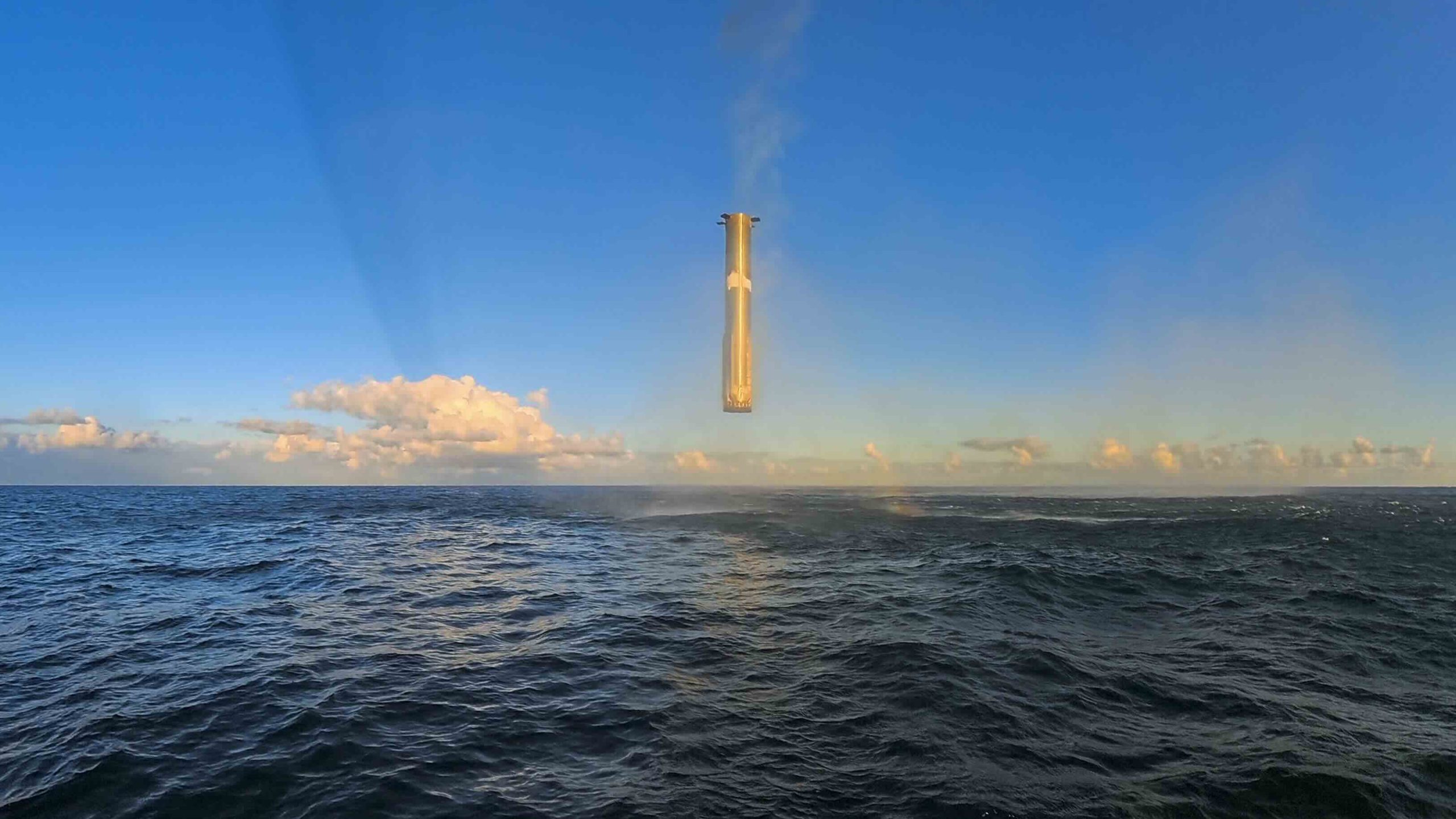
SpaceX has shared a video of a remarkable feat achieved by Starship’s Super Heavy booster during its 11th flight test.
The Super Heavy booster’s feat was so impressive that the whole maneuver, which was captured on video, almost looked like it was AI-generated.
Super Heavy’s picture perfect hover
As could be seen in the video shared by SpaceX, Starship’s Super Heavy booster, which is nearly 400 feet tall, smoothly returned to Earth and hovered above the Gulf of America for a few seconds before it went for its soft water landing. The booster’s picture-perfect maneuver before splashing down all but capped a near-flawless mission for Starship, which is about to enter its V3 era with Flight 12.
The booster’s balance and stability were so perfect that some users on X joked that the whole thing looked AI-generated. Considering the size of Super Heavy, as well as the fact that the booster was returning from space, the hovering display all but showed that SpaceX is dead serious about keeping its dominant lead in the spaceflight sector.
Starship V2’s curtain call
As noted in a Space.com report, Flight Test 11 achieved every major goal SpaceX had set for the mission, including deploying Starlink mass simulators, relighting Raptor engines in space, and executing a stable reentry for both the Starship Upper Stage and the Super Heavy booster. The feat also marked the second time a Super Heavy booster has been reflown, a milestone in SpaceX’s quest to make the entire Starship system fully reusable.
Starship’s V2 vehicle will now give way to the upgraded Starship V3, which is designed for faster turnaround and higher payload capacity. The Starship program is expected to pursue even more aggressive targets in the coming months as well, with Elon Musk stating on social media platform X that SpaceX will attempt a tower catch for Starship Upper Stage as early as spring 2026.
-
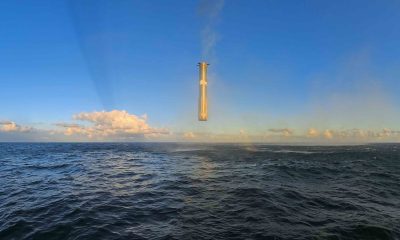
 Elon Musk2 weeks ago
Elon Musk2 weeks agoSpaceX posts Starship booster feat that’s so nutty, it doesn’t even look real
-

 Elon Musk2 weeks ago
Elon Musk2 weeks agoTesla Full Self-Driving gets an offer to be insured for ‘almost free’
-

 News2 weeks ago
News2 weeks agoElon Musk confirms Tesla FSD V14.2 will see widespread rollout
-

 News2 weeks ago
News2 weeks agoTesla is adding an interesting feature to its centerscreen in a coming update
-

 News2 weeks ago
News2 weeks agoTesla launches new interior option for Model Y
-

 News2 weeks ago
News2 weeks agoTesla widens rollout of new Full Self-Driving suite to more owners
-

 Elon Musk2 weeks ago
Elon Musk2 weeks agoTesla CEO Elon Musk’s $1 trillion pay package hits first adversity from proxy firm
-

 News1 week ago
News1 week agoTesla might be doing away with a long-included feature with its vehicles

